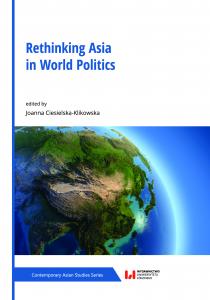Rethinking Agriculture Development in the Greater Mekong Subregion Countries
Abstract
The agriculture remains a strategic sector of the economy, despite the widespread decline in its share in GDP production and employment. Its development is observed as a key factor in maintaining food security, as well as reducing poverty. The GMS’s agriculture is characterized by lagging growth rates in comparison with other sectors of the national economy. However, the GMS’s agriculture has shown positive changes. First of all, countries in the region are following a path of intensification, so the yield has increased steadily, although its strong dependence on variable weather conditions is major risk. Much of the agricultural land in the GMS is prone to floods, droughts or both. At the same time, despite the growth in labor productivity, its increase was not significant. The structure of agricultural production has begun to change. Traditionally monoculture production, specializing in rice cultivation, is gradually diversifying into secondary cash crop production, which is helping to increase cash production and agricultural exports. Agriculture in the GMS has been shifting from traditional subsistence to modern commercial farming. Peasant farms are increasingly oriented to the regional and world markets. They begin to produce products with comparative advantages, participating in the regional division of labor. The construction of vertically integrated enterprises and value chains within the framework of the GMS is also taking place. The positive effect of integration processes is the convergence of prices on the regional agricultural market and direct impact on global consumers. This article examines the features and achievements of agriculture, as well as highlights the challenges and problems. Rolnictwo pozostaje strategicznym sektorem gospodarki, pomimo powszechnego spadku jego udziału w produkcji PKB i zatrudnieniu. Jej rozwój postrzegany jest jako kluczowy czynnik utrzymania bezpieczeństwa żywnościowego, a także ograniczania ubóstwa. Rolnictwo GRM charakteryzuje się słabą dynamiką wzrostu w porównaniu z innymi działami gospodarki narodowej. Jednak rolnictwo GMS wykazało pozytywne zmiany. Przede wszystkim kraje regionu podążają ścieżką intensyfikacji, więc plony systematycznie rosną, choć dużym ryzykiem jest jego silna zależność od zmiennych warunków pogodowych. Znaczna część gruntów rolnych w GMS jest narażona na powodzie, susze lub jedno i drugie. Jednocześnie, mimo wzrostu wydajności pracy, jej wzrost nie był znaczący. Zaczęła się zmieniać struktura produkcji rolnej. Tradycyjnie produkcja monokulturowa, specjalizująca się w uprawach ryżu, stopniowo się różnicuje, a produkcja wtórnych upraw dochodowych rozwija się, co powoduje wzrost produkcji pieniężnej i eksportu rolnego. Rolnictwo w GMS przechodzi od tradycyjnego rolnictwa na własne potrzeby do nowoczesnego rolnictwa komercyjnego. Gospodarstwa chłopskie w coraz większym stopniu zorientowane są na rynki regionalne i światowe. Zaczynają wytwarzać produkty o przewadze komparatywnej, uczestnicząc w regionalnym podziale pracy. Następuje również budowa zintegrowanych pionowo przedsiębiorstw i łańcuchów wartości w ramach SBM. Pozytywnym efektem procesów integracyjnych jest konwergencja cen na regionalnym rynku rolnym i bezpośredni wpływ na światowych konsumentów.
Collections


